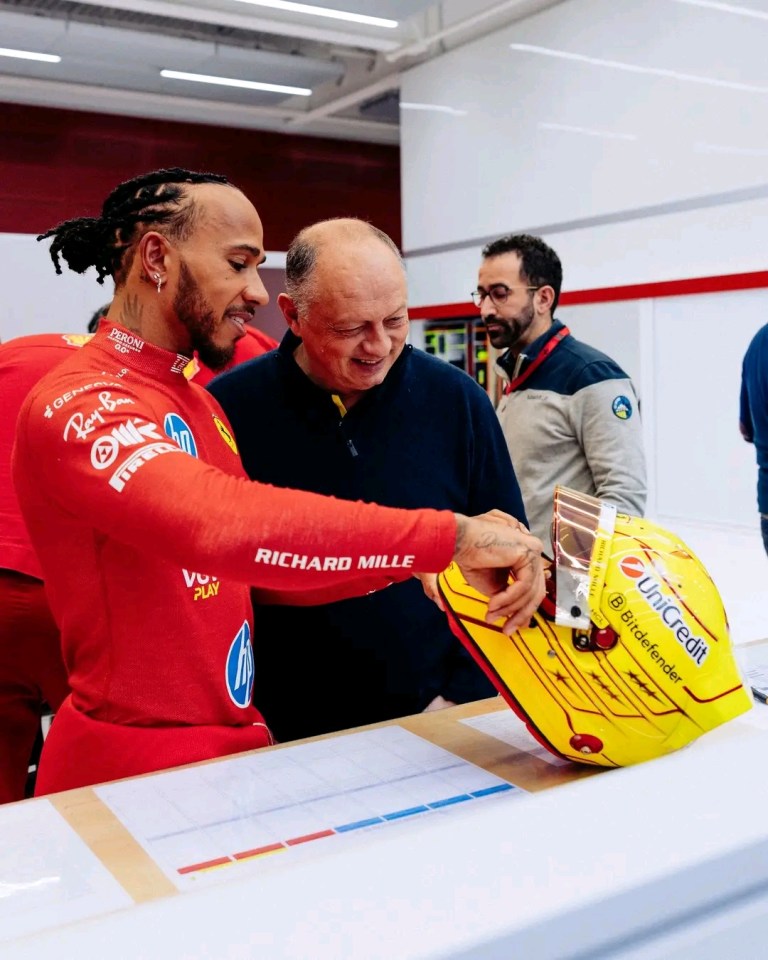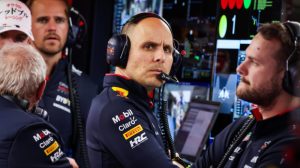Just in:Lewis Hamilton request for faster car Shows Promise with Key Improvements, But…read more

Lewis Hamilton request for faster car Shows Promise with Key Improvements, But…read more
Italian media reports suggest that the Ferrari SF-25, the team’s new Formula 1 car for the 2025 season, has shown significant improvements compared to its predecessor, the SF-24. Claims suggest the SF-25 is almost half a second faster per lap, sparking excitement among fans and experts alike. However, these reports are met with skepticism by renowned Italian journalist Leo Turrini, who dismissed these claims as speculative and lacking substance. According to Turrini, rumors about the SF-25’s dramatic improvements—such as the alleged one-second gain in simulator tests—are mostly baseless. He points out that such comparisons are made without knowing the performance data of other teams, such as Mercedes, McLaren, or Red Bull, whose cars may also have undergone changes. In the absence of reliable data from all teams, these statements remain speculative at best.
Turrini’s critical perspective is rooted in the difficulty of making accurate comparisons during the winter break, as teams have limited information on one another’s developments. He highlights the uncertainty of these early reports, especially when the data provided lacks context. The gains that Ferrari reportedly achieved should be measured against the SF-24, not other teams’ cars, as the improvement pertains to Ferrari’s own development process.
In response to these reports, F1inGenerale spoke with a source close to Ferrari who clarified the actual improvements in the SF-25. The most significant gain, according to this source, came from the car’s front suspension. A shift to a pull-rod suspension design, which offers better performance and potential, has unlocked new possibilities for the team. The source estimates this upgrade alone accounts for a gain of approximately five tenths of a second per lap. Additionally, the team has made strides in aerodynamics by optimizing airflow between the undercut and sidepods, a crucial area for performance. These improvements, when combined with changes to the rear end and power unit, make the SF-25 a more competitive package than the SF-24.
Despite Turrini’s skepticism, Ferrari’s focus on incremental improvements is evident. A careful comparison with their previous car is essential to understand the extent of these gains, and early indications suggest that the SF-25 is poised to be more competitive than the SF-24. However, as Turrini notes, until more data is available from other teams, it is difficult to assess Ferrari’s true standing within the broader F1 field.
This update comes at a time when Formula 1 teams, including Mercedes, are preparing for a crucial season. Mercedes, in particular, has been under pressure to deliver a faster car after a challenging 2024 season. Lewis Hamilton has openly requested a car capable of competing with Red Bull and other top teams. His demands for a faster and more reliable car could intensify the competitive pressure within the grid as teams gear up for the season ahead. Ferrari’s potential improvements with the SF-25 may play a significant role in this ongoing battle for supremacy.
In conclusion, while initial reports suggest that Ferrari has made significant strides with the SF-25, the actual extent of these gains remains uncertain. Improvements to the front suspension, aerodynamics, and power unit are promising, but only time will tell if these changes will translate into a tangible advantage over rivals like Red Bull and Mercedes.






